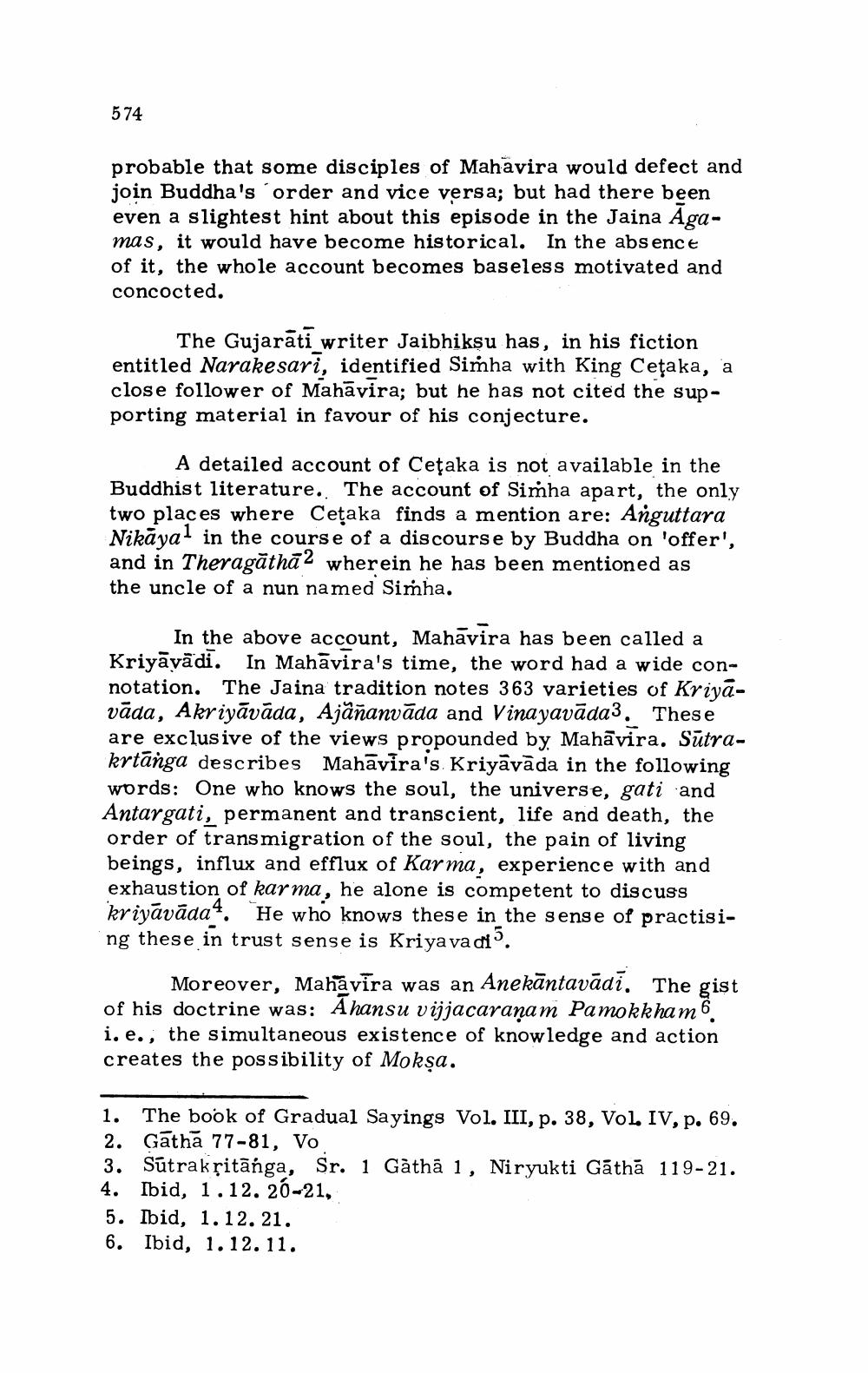________________
574
probable that some disciples of Mahavira would defect and join Buddha's order and vice versa; but had there been even a slightest hint about this episode in the Jaina Agamas, it would have become historical. In the absence of it, the whole account becomes baseless motivated and concocted.
The Gujarāti_writer Jaibhikṣu has, in his fiction entitled Narakesari, identified Simha with King Cetaka, a close follower of Mahāyira; but he has not cited the supporting material in favour of his conjecture.
A detailed account of Cetaka is not available in the Buddhist literature. The account of Simha apart, the only two places where Cetaka finds a mention are: Anguttara Nikāyat in the course of a discourse by Buddha on 'offer', and in Theragăthā2 wherein he has been mentioned as the uncle of a nun named Simha.
In the above account, Mahavira has been called a Kriyāyādi. In Mahavira's time, the word had a wide connotation. The Jaina tradition notes 363 varieties of Krivāvāda, Akriyāvāda, Ajañanvāda and Vina yavāda3. These are exclusive of the views propounded by Mahāvira. Sūtrakrtanga describes Mahavira's Kriyavāda in the following words: One who knows the soul, the universe, gati and Antar gati, permanent and transcient, life and death, the order of transmigration of the soul, the pain of living beings, influx and efflux of Kar ma, experience with and exhaustion of kar ma, he alone is competent to discuss kriyāvāda4. He who knows these in the sense of practising these in trust sense is Kriya va di'.
Moreover, Mahavira was an Anekāntavādi. The gist of his doctrine was: Ahansu vijjacaranam Pamokkham 6 i.e.; the simultaneous existence of knowledge and action creates the possibility of Mokşa.
1. The book of Gradual Sayings Vol. III, p. 38, VOL. IV, p. 69. 2. Gathā 77-81, Vo 3. Sūtrakritānga, Sr. 1 Gàthā 1, Niryukti Gāthā 119-21. 4. Ibid, 1.12, 20-21, 5. Ibid, 1.12. 21. 6. Ibid, 1.12.11.




